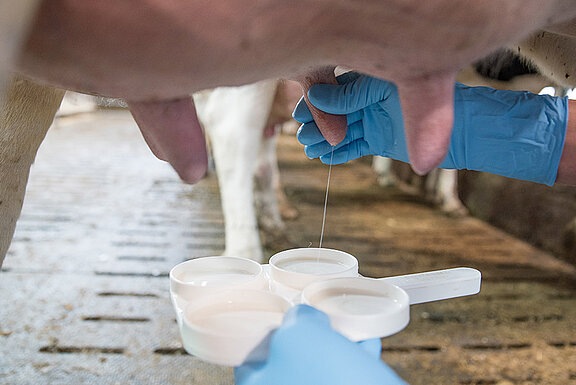A person who had direct contact with dairy cows infected with highly pathogenic avian influenza H5N1 (HPAIV H5N1, avian influenza) has also been found to be infected with H5N1. This has been confirmed by the Texas Department of State Health Services. The person had mild symptoms of conjunctivitis.
"Given the likely widespread distribution and high viral load in wild birds and poultry in the US, cases in cattle are very unusual but not completely excluded. The possibility of human infection under these circumstances through close contact with infected animals cannot be ruled out either, and has been described in extremely rare individual cases with the current H5N1 virus strains after contact with infected poultry," said FLI President Prof Dr Christa Kühn, commenting on the report. "The routes of transmission of the cattle and human cases in the USA must now be closely investigated and the situation in domestic animals in particular must continue to be closely monitored. So far, there is no evidence of such cases in Germany or Europe.
It is not yet clear whether cow-to-cow transmission has occurred in the USA. Data from the US cases need to be analysed to better classify the current unusual situation and to understand possible routes and causes of infection. Targeted measures for Germany can also be derived from this. General surveillance for HPAIV H5 infections in cattle is not planned in Germany in the current situation.
HPAIV H5N1 is an animal disease and a potential zoonotic agent. Strict precautionary measures would be taken in case of cases in dairy herds in Germany. These measures are aimed at containing the potential spread of the disease as effectively as possible and protecting humans from infection. Possible measures range from transport restrictions (milk, animals) to herd closures and extensive sampling.
In the current situation, it is particularly important to be vigilant and to take targeted samples in the event of suspicion or well-founded evidence of possible exposure.


